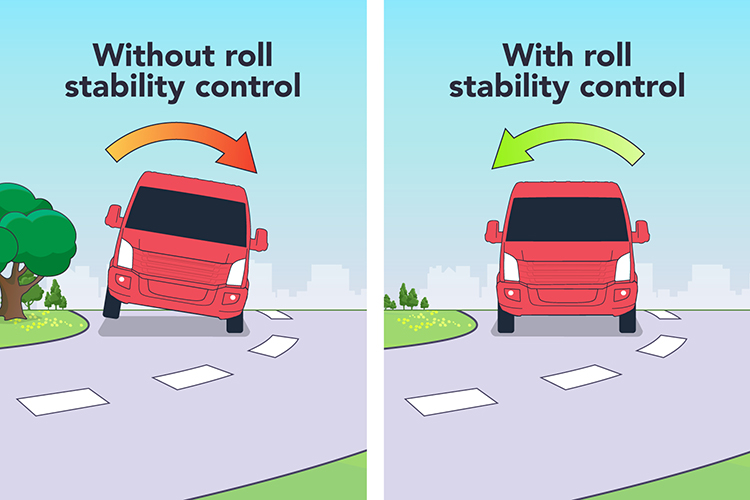How this technology works
Roll stability control reduces the risk of a vehicle rollover in extreme cornering or evasive manoeuvres, especially for vehicles with a high centre of gravity that are more susceptible to rollover. The system uses sensors and the electronic stability control system to limit vehicle roll by braking one or more wheels and reducing engine power.
An extension of roll stability control, the Curve Control system helps prevent loss of control of a vehicle on a curve. The system senses when you are entering a curve too quickly, and automatically slows the vehicle speed by reducing engine power and applies braking to the four wheels.
Operation
Roll stability control is normally on when you start your vehicle.
Description
A Sport Utility Vehicle with RSC able to negotiate sharp curve. The same SUV without RSC tips while trying to make the same curve.
Other names for this technology
- Active rollover protection
Things for drivers to keep in mind
- Even with roll stability control, it is still possible to lose control of the vehicle due to inappropriate driver input for the conditions. Aggressive driving can cause you to lose control of your vehicle
- Your vehicle can still roll over if you are driving off-road and the body angle is too high
- Roll stability control cannot prevent rollovers caused by hitting a curb or sliding into a ditch
- If the system activates, it is an indication that some tires have exceeded their ability to grip the road – this is a warning to slow down
- Vehicle maintenance is important. Roll stability control may not be able to keep the vehicle body under control if, for example, the shock absorbers are worn or the springs are broken
- Tire pressure is important. If tire pressures are too low, the sidewalls flex, allowing the vehicle to roll more. Check your tire pressures regularly
- You should read your owner's manual to learn about your vehicle's system, including its capabilities and limits
